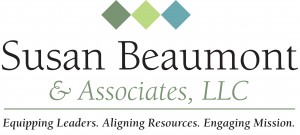Recently, a coaching client asked me this provocative question, “What are some common leadership mistakes that you’ve seen female heads of staff make?” The question was posed by a woman who is considering applying for the senior pastor role in a large congregation. Here is how I answered her. “The most common leadership error that I have seen female heads of staff make is confusing role and style. In an attempt to demonstrate collaborative leadership I’ve witnessed women diminish the impact of their role by relaxing role boundaries that are important for effectiveness in large church leadership. It’s much more effective to establish a collaborative spirit through the style you embody.”
Let me say more. Your leadership role is the specific set of tasks and duties that you are expected to attend to on a regular basis. These are the essential functions of the job that belong uniquely to the role of Senior Pastor. These functions differ from one congregational system to the next but they include things like vision casting, claiming strategic priorities, aligning the work of the staff team, establishing worship themes and preaching schedules, etc. By contrast, your leadership style is the collective embodiment of behavioral attributes and personality characteristics that establish a tone for working with and around you. Your leadership style can influence the culture of your staff team in areas like information sharing, communication practices, shared decision making, motivational practices, emphasis on teamwork, etc.
The error I’ve seen many women make is this. To be perceived as a more participative leader they choose to relax the boundaries around their role. They take on too many administrative tasks to illustrate their willingness to do tasks that some might call menial. They let go of other critical tasks that are uniquely theirs to do in an effort to let others on the staff team or in lay leadership feel like they have a voice, things like: creating agendas for staff team meetings, planning worship, setting preaching and teaching themes, setting priorities for the staff team. I’m not saying that staff members shouldn’t have input into these things, but the head of staff must retain a strong sense of ownership about those essential functions that are uniquely hers to do. or the alignment of the church’s mission suffers.
You can be a strong leader with a firm grip on your role and a clear awareness of what is yours to do in the congregation, and still demonstrate a participative leadership style. Let’s not confuse leadership styles and leadership roles!



